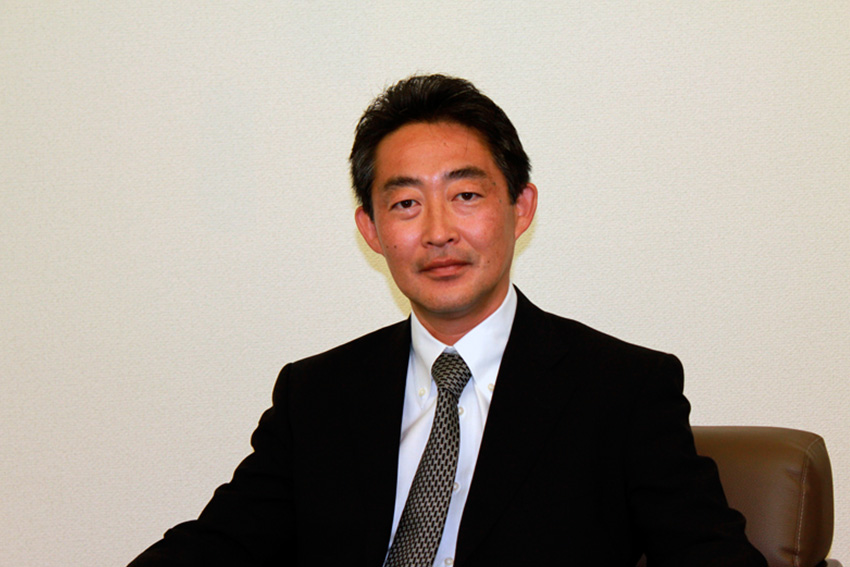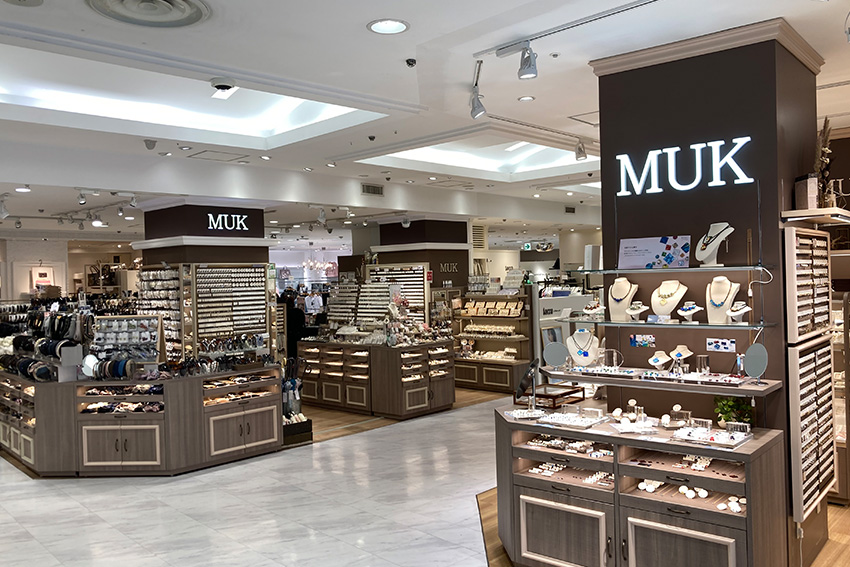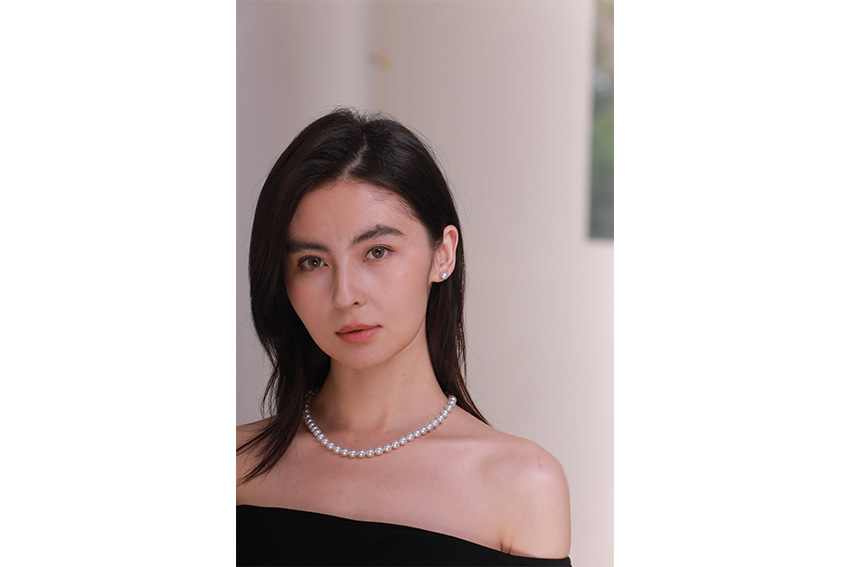Mukai is taking its specialized trading expertise and applying it to the world of fashion and accessories, bringing Japanese fashion to a global stage.

What makes Japan’s fashion and accessory brands unique, and how is that reflected in your company’s history?
I believe the three primary characteristics of Japanese fashion are its meticulousness. its detailed application, and its design.
Our company was established in 1966 by my father, who was first living in Kofu City, which is known for jewelry. He later moved to Shizuoka and started up a jewelry shop called Mukai Hoshokuten.
It’s been almost 60 years since then, and during the first 30 years, we had about 15 jewelry stores around the Shizuoka area. For the last 30 years, we have shifted our business model from jewelry to fashion accessories, and we have been providing our products through direct brand and chain stores across Japan.
We have three major brands: Puretre, MUK Mocabrown, and Prepoint; and then have other smaller brands. However, we have shifted our model to provide more accessible, less expensive accessories. We have expanded and now have a diverse operation that includes retail shops, a franchise model, and wholesale. We run 70 of our own-brand retail stores across Japan and are a supplier to over 380 stores.
Our manufacturing concept is to create an accessory that lets the person who’s wearing it shine. Our focus is on daily life usage and providing accessible accessories to women, like accessories for the workday or for going on a date. We have a diverse range that can be applied in every area of a woman’s life.
The COVID pandemic was a difficult yet transformative time for the retail sector. How did your company navigate those turbulent years?
During COVID, compared to 2019 our income dropped 35% in the first year, 25% in the second year, and 15% in the third year, but we have been able to recover recently. During that time, placing the highest priority on maintaining corporate strength, the company devoted itself to organizing and renovating existing stores, trying to survive through the crisis. We started our own e-commerce channel, which is now in its third year and which has been growing consistently every year.
Having said that, our products are low priced with a high mix, so it is hard for our customers to purchase such a diverse range of products online. I feel that the customers who purchase on our e-commerce channel are already fans of our stores. Those clients have been coming to our shops, understanding our quality, and appreciating our uniqueness, and are therefore happy to purchase our products online without having tried them on or seen them in person.
How are you trying to enhance the in-store experience for customers?
We have over 70 direct-brand stores and we supply to another 380 chain stores, so we’re not trying to expand the number of stores. Rather we are currently upgrading our existing stores in order to maximize and improve the customer experience.
Data shows that people in the regional areas tend to shop online, whereas people staying in urban areas can easily access the store, so they prefer going to them to make purchases. An example is Japanese rural prefectures with one major shopping center, where those who are not living near this shopping center prefer to shop online.
What services do you offer to cater to the rising numbers of tourists to Japan?

Ginza store
Our regional stores are more for domestic customers, whereas our urban city stores, such as those located in Osaka and Tokyo, attract more inbound tourists. Of course, we offer tax-free shopping and other tourism-friendly services in those urban stores. These shops also have the dual function of acting as a showcase for our brand to foreign retailers, which can lead to B2B business overseas.
Furthermore, we have expanded our “made-in-Japan” items to cater to foreign customers seeking to bring back unique Japanese products.
On top of its directly managed stores and partner stores, you have also franchised some of your leading brands. How has the business model of your stores evolved over the years?
We started off with our core, directly-managed stores, and then moved on to more of a franchising and supplying business. Through managing our own shops and brands, we have accumulated experience, know-how, and a deep understanding of market needs. This experience allows us to provide comprehensive solutions to partner stores. We also have a centralized production and distribution system, allowing us to reduce unit costs.
Our mass production capabilities, together with having our own logistics scheme, allows us to produce and to provide products in a highly cost-effective manner.
Out of your product portfolio, which gift do you recommend I offer my wife?
There are three types of product lineup. The first is the Made In Japan collection, which is planned and designed in-house and produced by Japanese craftsmen with a thorough focus on quality. The second is the Planning By Japan collection, in which domestic and foreign designers and factories collaborate. Our buyers select them, and the elements of design and coordination are strong.
The third is the Material Of Japan collection, which uses Japanese materials such as Akoya pearls, pottery, and silk fabrics. In our overseas e-commerce business, we mainly sell Made In Japan and Material Of Japan collections.

Pearl necklace
It’s difficult to make a recommendation because it depends on the recipient’s preferences. We have more than 10,000 different products so, I could make endless recommendations to you!
How do you stay up to date with the latest fashion trends, whether here in Japan or overseas?
Overseas, before Corona, we had about 20 directly managed stores in the Hong Kong and Shanghai areas, but all of them closed around 2020. We have now resumed activities in Taiwan and Shanghai. The company focuses on B2B services through showroom and online catalog capabilities as well as franchise agreements with 20 stores. We are committed to being a supplier, discussing the latest trends in Japan and in the countries where we operate, providing the best products.
Besides Shanghai, are there any new markets that you would like to venture into in the coming years?
We are currently trying to create a supply chain in the Chinese market through our Shanghai business, and once we have this know-how, we want to apply it across the globe. That being said, I don’t have any particular country in mind. Asian countries might be easier in terms of proximity, but we are also focusing on overseas exhibitions.
In addition, we would like to use the experience we have gained in exporting accessories to diversify our business. In the future, our vision is to become a trading company specializing in connecting Japan's unique fashion accessories with the global market. In addition to our company, there are many unique brands, designs, and craftsmen in Japan, so we would like to introduce them overseas.
As our final question, what ambitions or objectives would you like to achieve during your time as president?
My focus is not on the size of the company or on the quantity of our sales. Rather, my focus is on quality. I want to make MUKAI a robust enterprise. We want to be the strongest company in our sector in terms of products, assortments, services, customer satisfaction, human resources, business operations, and finance. That is the goal I have for my tenure as president!
For more information, visit their website at: https://www.muk-group.co.jp/
0 COMMENTS